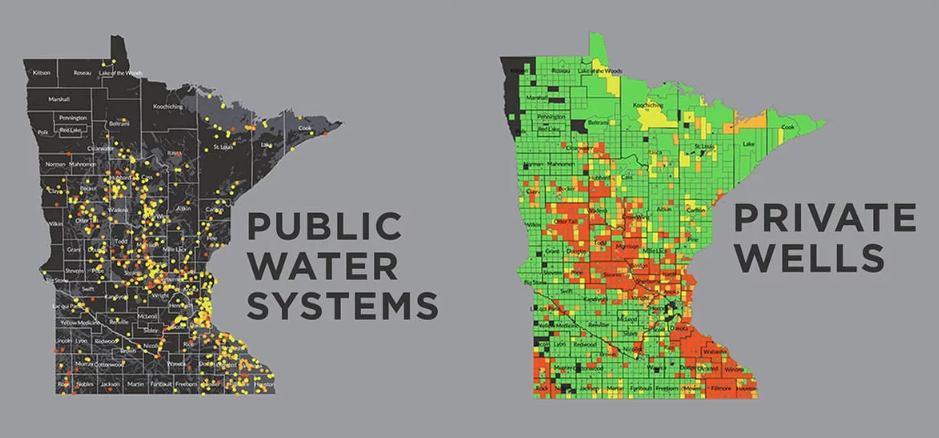Report: One in eight Minnesotans drink groundwater with elevated nitrate
(Image via Environmental Working Group)
Our friends over at the Environmental Working Group have just released a fascinating, if disquieting, report on nitrate contamination in tap water throughout Minnesota.
The report shows that drinking water for an estimated half a million Minnesotans is drawn from groundwater contaminated with elevated levels of nitrate, a toxic pollutant that is linked to cancer and is especially dangerous for infants.
From public wells...
Using data from the U.S. Environmental Protection Agency, the report found that about one in eight Minnesotans are served by groundwater-based public water systems that had at least one detection of elevated levels of nitrate in the past 10 years.
The report shows that 472,983 Minnesotans were served by a total of 727 public water systems that were contaminated with at least 3 mg/L of nitrate.
Almost 300,000 people drink from public systems contaminated at or above 5 mg/L, and more than 150,000 from public systems with at least 10 mg/L — the state and federal Health Risk Limit.
...to private wells
Using data from the Minnesota Department of Health and Department of Agriculture in the past 10 years, the report shows that 7,657 Minnesota households drink from private wells with at least one test at or above 3 mg/L of nitrate; 5,825 from wells at or above 5 mg/L; and 3,364 from wells with at or above 10 mg/L.
This excellent work details the threat that nitrate (primarily from agricultural chemicals and manure) can pose to public health. That's why measures like the Groundwater Protection Rule our River Guardians helped support are so important, and why FMR will continue to work with the farm industry and our elected officials to find more comprehensive solutions, like diversified cropping systems, clean-water crops and continuous living cover.
We encourage FMR members to read the Environmental Working Group report and sign up to become a River Guardian so that together we can help address threats to our most precious resource: clean, safe drinking water.
